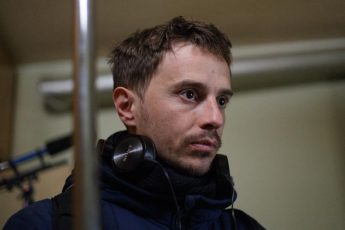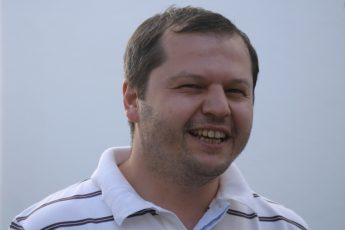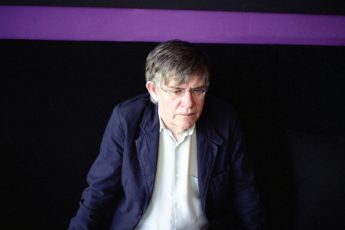
At the Filmfestival Cottbus, we caught up with Mira Fornay, director of “Foxes” (2009) and “My Dog Killer” (2013). At the Q & A following the screening of “My Dog Killer”, Fornay revealed that she had been inspired to make the film after finding out that her neighbor had joined a right-wing group. She spent over two years researching such groups, trying to understand what might make an intelligent and friendly Slovak turn towards such extremes.
This was a Czech-Slovak coproduction. Did Czech television contribute to the costs?
We had Czech funding and Slovak funding, and Czech TV joined us at the very end, when the film was almost finished. It was great, because we wouldn’t have been able to finish without them.
Was it distributed through Czech television?
Yes, it will be, but not yet, because it’s not even one year old — we only finished it in January.
We’re really interested in the aesthetic quality of the film, because there were many scenes where it looked like you were only using natural light.
Yes, we didn’t light much, we didn’t have money for that. (Laughs) It’s not all about the money, though. I think if my DP had offered me more lights, I would have said no. But he’s very smart, the DP, he’s a very good one. We agreed it would not be good for the film: no music, not much lighting; and he was flexible enough to also accept my visual concept and compositions which were a bit different from the norm.
It’s part of a very stark aesthetic. Is this a concern with realism?
For me it’s not only about realism, although it’s very sober. But there is a structure, a visual concept from the very beginning. I tried to make a film that is making a point not only through its context, but with form. It’s not like a documentary at all for me, but one must know where and why putting the camera in a particular place is essential for the story. We used hand-held camera, but there are moments when the camera is still. There is a clear concept behind it.
Yes, there are a lot of moments of stillness that are very tense, like when Marek, the protagonist, is sitting outside the beauty parlor and you get lost in his eyes. Did you shoot everything on film?
No, the night shoots were on digital camera Alexa, but the day shooting is 35mm.
Something in the story that also interested me were the little moments of nostalgia for the old Slovakia — the folk songs, the little bit about Jozef Tiso. Do you see a connection between this kind of nostalgia and right-wing movements?
In the story, I wanted to show that everything is connected. I believe that to understand the past properly, it is essential to be capable to understand the present and future. It’s not only nostalgia, but still Tiso as a reference is reflects how some people are very nationalistic and racist these days. So this was the message. I think there needs to be more discussion about this, not to correct or manipulate people, to say “this is good” or “this is bad”, but to discuss why all of this is still happening as it is very connected with what has happened before. There’s heavy history that people keep forgetting, and that’s one reason why people are joining right-wing clubs. It seems to me that they do not understand the background and the tragic political issues behind it.
Has the problem gotten worse in the past few years?
In my opinion, this wave goes a bit up and down. But I think it’s going up right now, because the radicals are behaving “politically correctly”. It was easier to sort this problem before, because right-wings were violent, there were committed crimes, so charges could be taken against them. But now the leaders of this movement have learned “to behave”, and I find them much more dangerous.
And I’m not judging anyone. I spent about three years with many racist and right-wings guys. I swear, most of them are not dull at all. They have a lot of empathy for each other within the group, which doesn’t excuse their way of thinking and their inner racism at all! But the fact they support each other means they have the quality of humanity within the group. So there is great hope to let them understand that humanity must be for everyone.
I really feel compassion for them.
Yes, I think that comes out in the film because you see how financial problems and the lack of support from the state make them all extremely stressed. For the whole beginning of the film, you’re waiting for violence to come out because of that. Do you feel that making the film has brought you to a greater understanding of these people?
Yes, of course. It was a very hard decision to do the subject, because I’m a woman and they’re a little bit scary. But then I realized that this was not such a big deal. I behaved honestly, I respected them as human beings, so they respected me back. However, I never agreed with what they were saying about politics and racism. That was always a strict “no” on my side. But I was interested in their ordinary lives. I was really interested in them as human beings. I was maybe the first person who listened to them and not to argue about politics.
But to me, the reason that people come to the right-wing groups is a problem not of radicals but of the society and the family and school systems – the lack of education. There are a lot of problems that need to be discussed.
I’m not a sociologist, I’m not an anthropologist. I just observe.
Thank you for the interview.




Leave a Comment